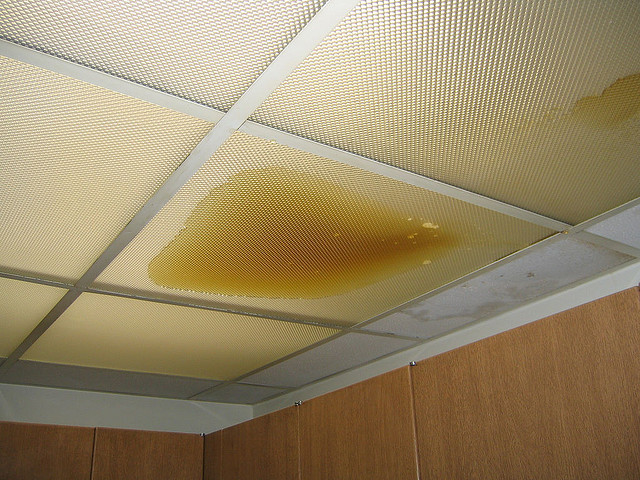Each person will have his or her own idea on the subject of Detecting hidden plumbing leaks.

Early detection of leaking water lines can minimize a potential catastrophe. In addition to saving you cash, it will minimize the worry and irritation. The moment you discover a leakage, calling your plumber for fixings is the very best option. However, some tiny water leaks might not show up. If you can not spot it with your nude eyes, below are some hacks that aid.
1. Analyze the Water Meter
Every home has a water meter. Inspecting it is a proven manner in which helps you find leakages. For beginners, switch off all the water sources. Ensure no one will certainly flush, make use of the faucet, shower, run the washing machine or dish washer. From there, most likely to the meter as well as watch if it will certainly change. Considering that no one is utilizing it, there should be no activities. If it moves, that indicates a fast-moving leak. Furthermore, if you identify no changes, wait an hour or 2 and examine back once again. This indicates you might have a slow-moving leak that might even be below ground.
2. Check Water Intake
If you identify sudden adjustments, in spite of your intake being the exact same, it means that you have leakages in your plumbing system. A sudden spike in your costs indicates a fast-moving leakage.
A steady boost every month, even with the same routines, shows you have a sluggish leakage that's also gradually rising. Call a plumber to completely examine your residential property, especially if you feel a cozy area on your floor with piping below.
3. Do a Food Coloring Examination
When it comes to water intake, 30% comes from commodes. If the color somehow infiltrates your dish throughout that time without flushing, there's a leakage in between the tank and bowl.
4. Asses Exterior Lines
Do not neglect to examine your exterior water lines as well. Ought to water seep out of the connection, you have a loosened rubber gasket. One small leakage can throw away tons of water as well as spike your water bill.
5. Inspect and also Examine the Circumstance
Homeowners need to make it a behavior to inspect under the sink counters as well as even inside closets for any type of bad odor or mold growth. These 2 red flags show a leak so prompt focus is needed. Doing routine inspections, also bi-annually, can conserve you from a major trouble.
A lot more significantly, if you know your residence is already old, maintain a watchful eye on your heaters, tubes, pipelines etc. Look for discolorations and also deteriorating as many home appliances and also pipelines have a life expectancy. They will likewise naturally wear away due to tear and wear. Do not wait for it to escalate if you presume dripping water lines in your plumbing system. Call an expert plumber today so you do not wind up with a dreadful mess in your house.
Early discovery of dripping water lines can minimize a potential calamity. Some small water leaks might not be visible. Inspecting it is a guaranteed way that helps you find leakages. One little leak can squander bunches of water and surge your water expense.
If you believe dripping water lines in your plumbing system, don't wait for it to escalate.
WARNING SIGNS OF WATER LEAKAGE BEHIND THE WALL
PERSISTENT MUSTY ODORS
As water slowly drips from a leaky pipe inside the wall, flooring and sheetrock stay damp and develop an odor similar to wet cardboard. It generates a musty smell that can help you find hidden leaks.
MOLD IN UNUSUAL AREAS
Mold usually grows in wet areas like kitchens, baths and laundry rooms. If you spot the stuff on walls or baseboards in other rooms of the house, it’s a good indicator of undetected water leaks.
STAINS THAT GROW
When mold thrives around a leaky pipe, it sometimes takes hold on the inside surface of the affected wall. A growing stain on otherwise clean sheetrock is often your sign of a hidden plumbing problem.
PEELING OR BUBBLING WALLPAPER / PAINT
This clue is easy to miss in rooms that don’t get much use. When you see wallpaper separating along seams or paint bubbling or flaking off the wall, blame sheetrock that stays wet because of an undetected leak.
BUCKLED CEILINGS AND STAINED FLOORS
If ceilings or floors in bathrooms, kitchens or laundry areas develop structural problems, don’t rule out constant damp inside the walls. Wet sheetrock can affect adjacent framing, flooring and ceilings.
https://www.servicemasterbyzaba.com/blog/how-to-detect-water-leakage-in-walls/

Hopefully you enjoyed reading our article about Top leak detection hacks. Thanks for finding the time to browse our article post. Loved our write-up? Please share it. Help others discover it. We recognize the value of reading our article about Top leak detection hacks.
Comments on “Guide To Water Leakage Discovery In Your Home”